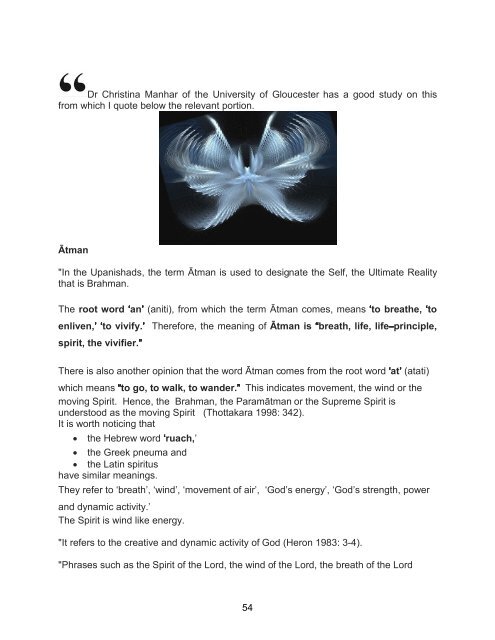KathaUpanishad
You also want an ePaper? Increase the reach of your titles
YUMPU automatically turns print PDFs into web optimized ePapers that Google loves.
Dr Christina Manhar of the University of Gloucester has a good study on this<br />
from which I quote below the relevant portion.<br />
Ātman<br />
"In the Upanishads, the term Ātman is used to designate the Self, the Ultimate Reality<br />
that is Brahman.<br />
The root word ‘an’ (aniti), from which the term Ātman comes, means ‘to breathe, ‘to<br />
enliven,’ ‘to vivify.’ Therefore, the meaning of Ātman is “breath, life, life–principle,<br />
spirit, the vivifier.”<br />
There is also another opinion that the word Ātman comes from the root word ‘at’ (atati)<br />
which means “to go, to walk, to wander.” This indicates movement, the wind or the<br />
moving Spirit. Hence, the Brahman, the Paramātman or the Supreme Spirit is<br />
understood as the moving Spirit (Thottakara 1998: 342).<br />
It is worth noticing that<br />
• the Hebrew word ‘ruach,’<br />
• the Greek pneuma and<br />
• the Latin spiritus<br />
have similar meanings.<br />
They refer to ‘breath’, ‘wind’, ‘movement of air’, ‘God’s energy’, ‘God’s strength, power<br />
and dynamic activity.’<br />
The Spirit is wind like energy.<br />
"It refers to the creative and dynamic activity of God (Heron 1983: 3-4).<br />
"Phrases such as the Spirit of the Lord, the wind of the Lord, the breath of the Lord<br />
54


















